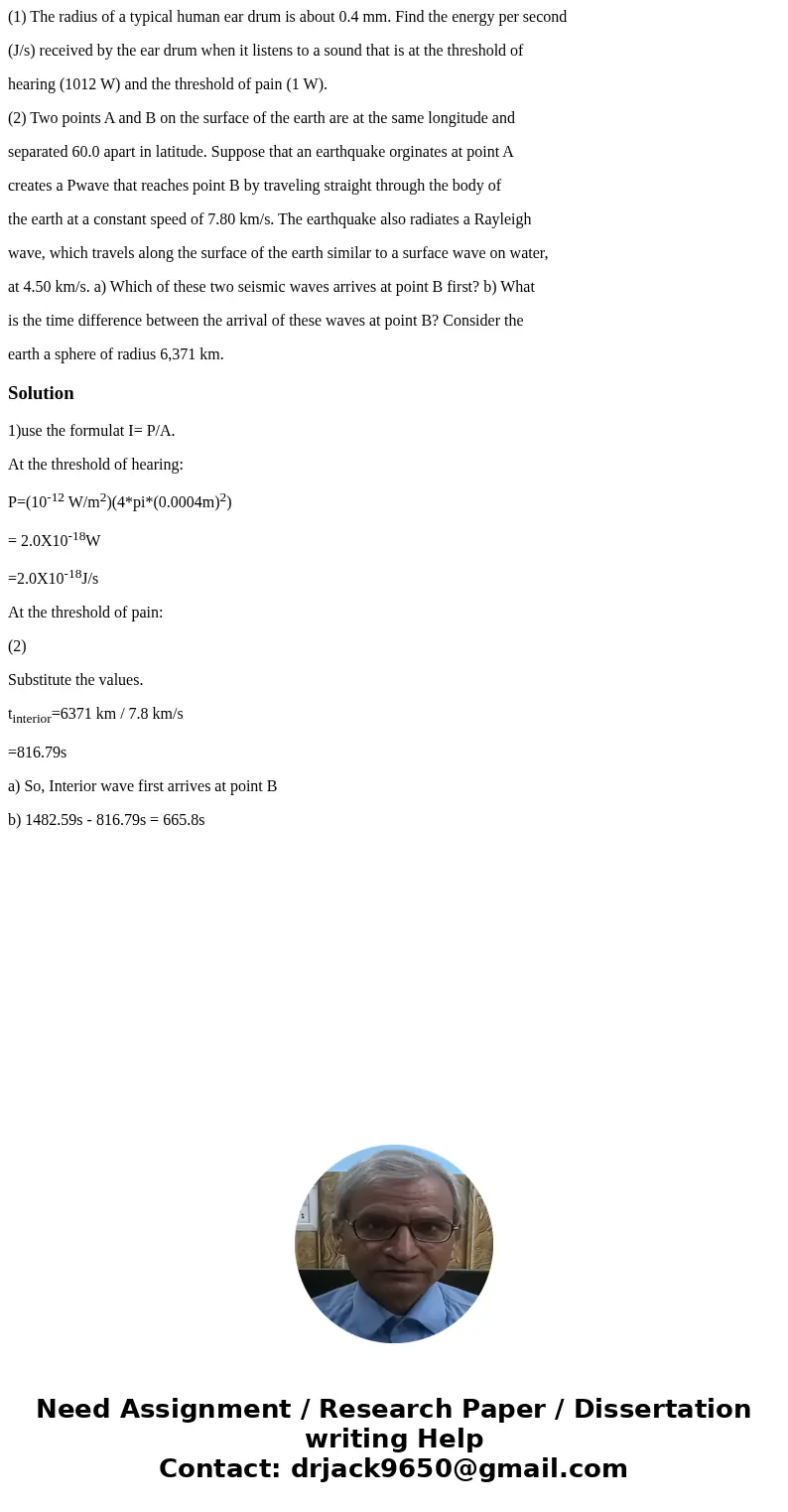1 The radius of a typical human ear drum is about 04 mm Find
(1) The radius of a typical human ear drum is about 0.4 mm. Find the energy per second
(J/s) received by the ear drum when it listens to a sound that is at the threshold of
hearing (1012 W) and the threshold of pain (1 W).
(2) Two points A and B on the surface of the earth are at the same longitude and
separated 60.0 apart in latitude. Suppose that an earthquake orginates at point A
creates a Pwave that reaches point B by traveling straight through the body of
the earth at a constant speed of 7.80 km/s. The earthquake also radiates a Rayleigh
wave, which travels along the surface of the earth similar to a surface wave on water,
at 4.50 km/s. a) Which of these two seismic waves arrives at point B first? b) What
is the time difference between the arrival of these waves at point B? Consider the
earth a sphere of radius 6,371 km.
Solution
1)use the formulat I= P/A.
At the threshold of hearing:
P=(10-12 W/m2)(4*pi*(0.0004m)2)
= 2.0X10-18W
=2.0X10-18J/s
At the threshold of pain:
(2)
Substitute the values.
tinterior=6371 km / 7.8 km/s
=816.79s
a) So, Interior wave first arrives at point B
b) 1482.59s - 816.79s = 665.8s

 Homework Sourse
Homework Sourse